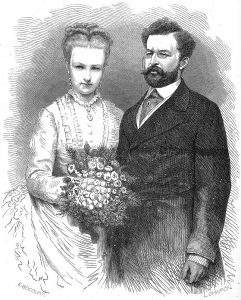Belgian princesses, Hungarian relationships – Peculiar stories from the past

According to cultura.hu, (Mária) Mary, (Stefánia) Stefania and (Lujza) Louisa Belgian princesses had a close relationship with Hungary – but not only due to their marriages. Let’s find out about their peculiar life stories!
The Low Countries look back on a long and diverse history, during which the throne was taken by Spanish, Burgundian and Habsburg (with Hungarian relations) rulers in turns. But the independence of Belgium was only proclaimed in 1831, meaning that there were no dynastic relations between the two countries.
Lifelong mourning
However, in previous centuries, there were some considerable links. For instance, the wife of Hungarian King Louis II (who died at a young age in the Battle of Mohács) Mary was the younger sister of Spanish King and Holy Roman Emperor Charles V.

After she had lost her husband, she only stayed in Hungary threatened by the Turks until she managed to ensure the throne for her other brother, Ferdinand. Then, she returned home to the Low Countries, where Charles V trusted her with the governing of his lands.
According to the notes of historians, Mary of Hungary – as she was known – was one of the best governors of the provinces.


She resigned along with her emperor brother in 1556 and died in a Spanish monastery two years later.
Mary swore that she would never cast her weeds, and she kept her promise until her death 32 years later. Many people wanted to marry her, but she kept saying no. She is depicted in her white veil on all of her portraits that were made after Mohács. She kept her husband’s heart in a golden urn and took it with her everywhere. She remembered Louis II with utmost love in her testament.
Duchess instead of Archduchess
The next relationship formed at the end of the 19th century. 1881 was an important year in the history of Belgium. The country was celebrating the semi-centennial jubilee of its independence. Leopold II commemorated the event with a huge triumphal arch and the construction of several museums, and also started its adventure in the Congo with the aim of making Belgium a colonial power.
The king always answered doubtful questions with confidence: “There are no small countries, only small souls”.
The glorious events of the year were topped off by the royal wedding: Archduke Rudolph, the crown prince of the Austro-Hungarian Empire, married the daughter of the Belgian king, Stefania.

The marriage turned into a nightmare and a tragedy for Stefania. Rudolph was not happy about the marriage of convenience; he did not come to love his young wife and soon fell in love with Baroness Maria von Vetsera. The affair, forbidden by imperial command, ended with a double suicide in Mayerling in 1889: the crown prince first killed his lover and then himself.
It was hard for the unhappy Stefania to tolerate that the court partly blamed her for the tragedy and the disaffection of the prince.

Nine years later, she married Elemér Lónyai, Duke of Nagylónya and Vásárosnamény, with whom she lived happily for 45 years, even though they did not have kids.

They mainly lived in Hungary; this was where they survived WWII. Stefania died in 1945, followed by her husband a year later. Their names are commemorated in Budapest by the Lónyay Street and the Stefánia Road.
The cutty princess
King Leopold II’s oldest daughter, Louisa also kept Hungarian ties. She had to marry Duke Philip Saxe-Coburg, who was actually her cousin. Leopold did not like his son-in-law, but since the duke lived in Hungary, he found him useful. During the unhappy marriage, the thoughtless and feather-brained girl became the black sheep of the royal family: first with her endless squandermania, then with her scandalous love affairs.

Her first “official” lover was a Hungarian nobleman, but her true love was the monarchy’s Croatian officer, Géza Mattachnich, who even ran away with the duchess. Mattachnich fought a dual with the duke in Vienna in 1898, as a consequence of which the cuckold got injured.
Louisa did not even try to live modestly, she travelled and danced through Europe with her lover.
She finally divorced her husband in 1906, eight years after Louisa had initiated the divorce. The royal scandal ended when Louisa was confined in an institution for counterfeiting the signature of Duchess Stefania, while Mattachnich was imprisoned.

After they were let out, they settled down in Paris. Following the death of her lover, Louisa lived in Brussels and Germany; she fought for her father’s inheritance in vain. She could never return to her homeland; she died in Wiesbaden.
Featured image(s): Wiki Commons
Source: http://cultura.hu/





